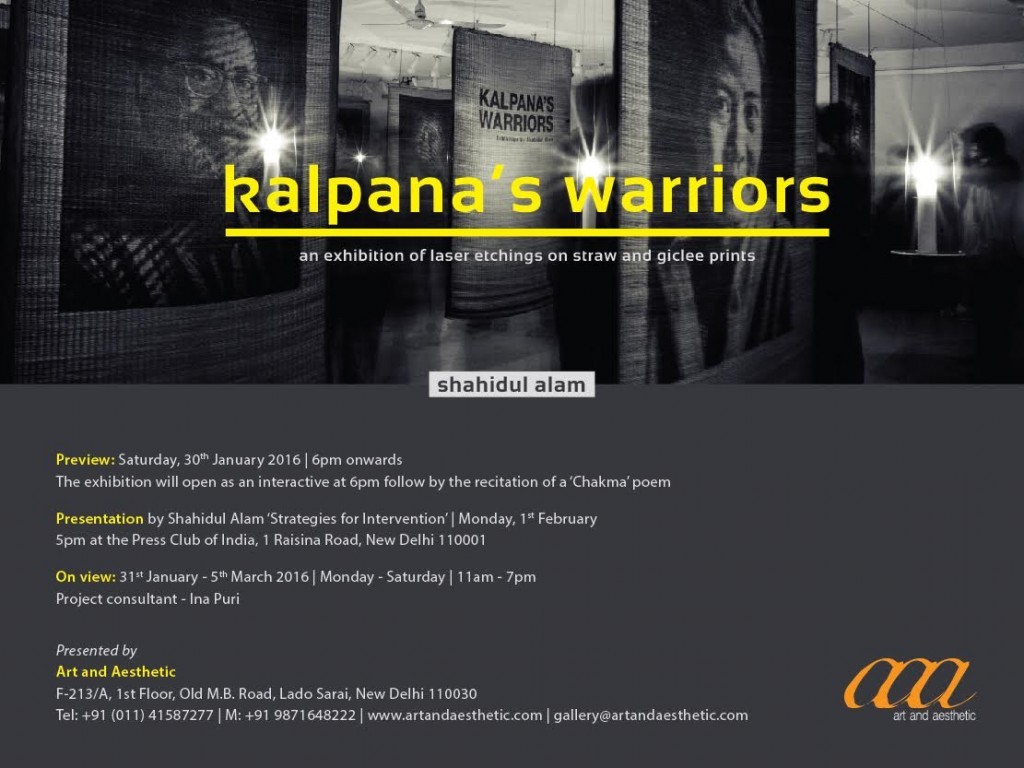
Kalpana Chakma, a young leader of the Bangladeshi Hill Women?s Federation, was abducted from her home by military personnel and civilian law enforcers at gunpoint on 12 June 1996. She remains missing. Through this work, part of Drik?s ?No More? campaign, photographer?Shahidul Alam?has tried to break a silence that successive governments, whether civilian or military backed, have carefully nurtured. The exhibition uses laser etching on straw mats, an innovative technique developed specifically for this exhibition. The process involved in creating these images is rooted to the everyday realities of the hill people, the paharis. Interviewees had repeatedly talked of the bareness of Kalpana?s home. That there was no furniture. That Kalpana slept on the floor on a straw mat. The straw mats were burned by a laser beam much as the fire that had engulfed the pahari villages.
Shilpakala Award recipient Shahidul Alam, set up Drik and Majority World agencies, Pathshala South Asian Media Institute and Chobi Mela festival. Honorary Fellow of the Royal Photography Society and visiting professor at Sunderland University. Alam has chaired the World Press Photo jury. Alam also introduced email to Bangladesh. His book my journey as a witness has been described as ?the most important book ever written by a photographer? by legendary picture editor of?Life Magazine, John Morris. He is an internationally acclaimed public speaker and has presented at Hollywood, National Geographic, re:publica, COP21 and POP Tech.
Reviews:
What’s Hot
Buzz in Town
Artslant
Blouinartinfo
Events High
The Statesman
Tag: Indigenous
Kalpana's Warriors
Remarkable: Noam Chomsky
Absolutely stunning: Jess Worth. New Internationalist Magazine (Oxford)
They told me you were quiet. But I felt the rage in your silence. That when you spoke, they rose above themselves. But I felt their fear. That they held you amidst them. But I felt their loneliness. They pointed to the Koroi tree where you would all meet. The banyan tree under which you spoke. Ever so powerfully. They pointed to the mud floor, where you slept. I touched the mat that you had rested upon, and I knew I had found the vessel that must hold your image.
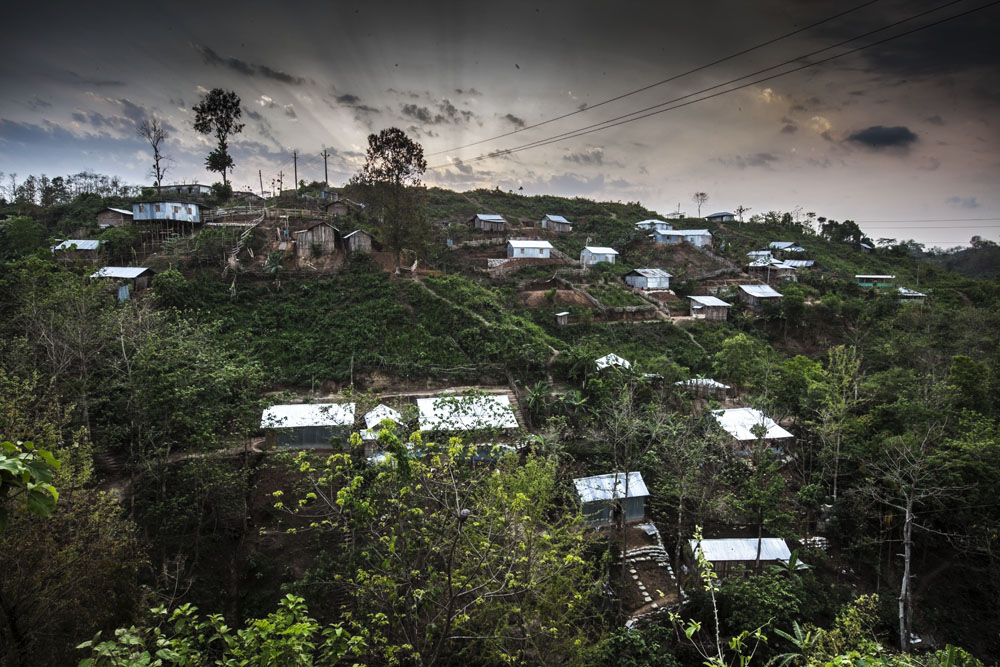
They had tried to erase you, your people, your memory. They had torched your homes and when coercion failed, when you remained defiant, they took you away, in the dead of night.

The leaves burned as the soldiers stood and watched. The same leaves they weave to make your mat. The same leaves I shall burn, to etch your image. Will the burning mat hold your pain? Will the charred leaves hold your anger? Will the image rising from the crisp ashen leaves reignite us? Will you return Kalpana?
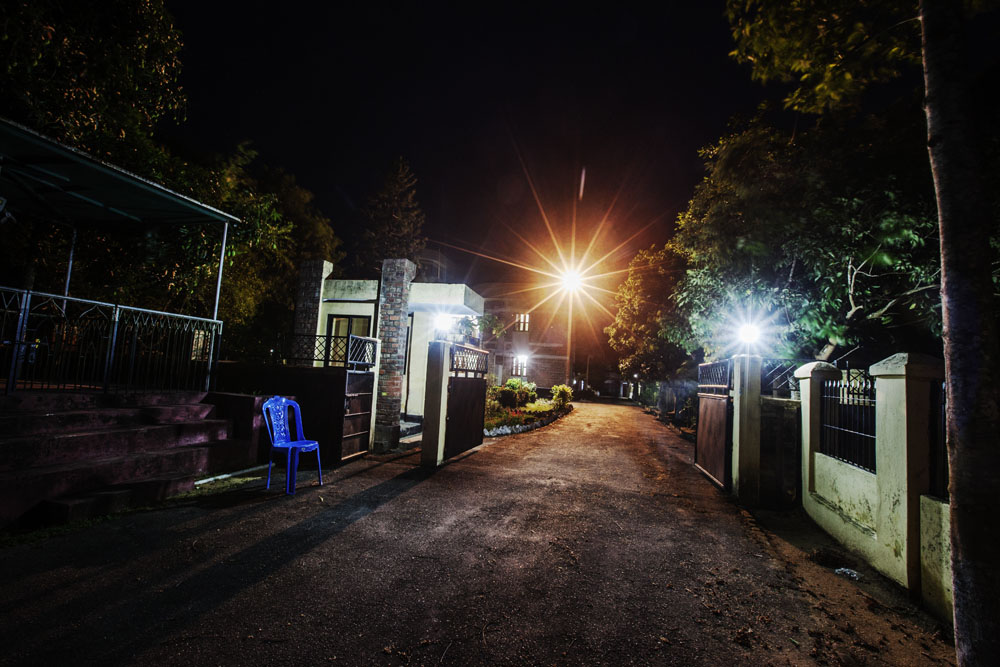
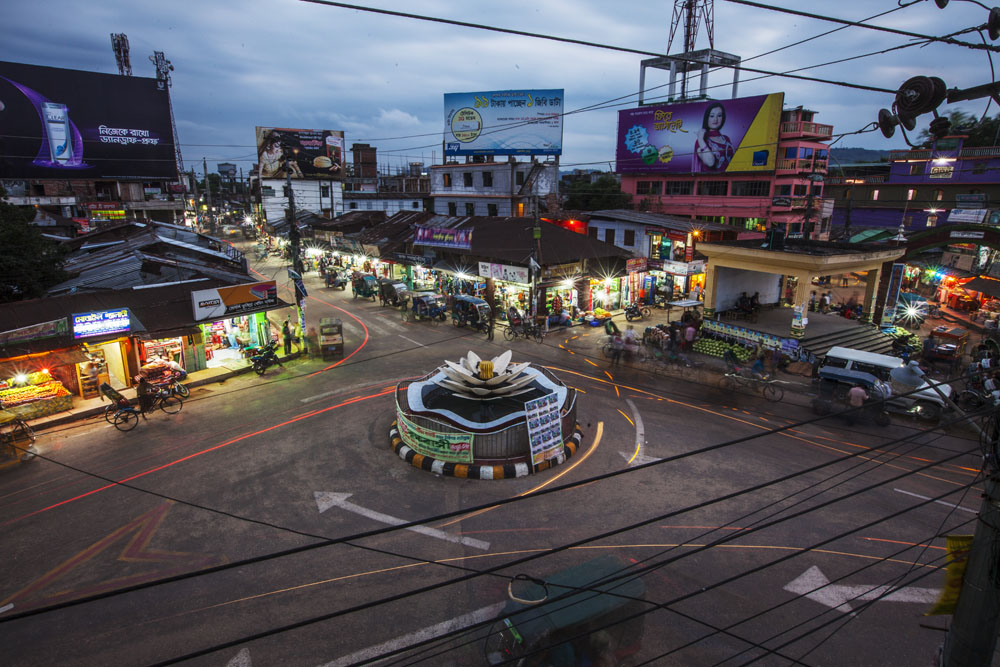
For nineteen years I have waited, my unseen sister. For nineteen years they have waited, your warriors. Pahari, Bangali, men, women, young old. Was it what you said? What you stood for? Was it because you could see beyond the land, and language, the shape of one?s eyes and see what it meant to be a citizen of a free nation? For pahari, bangali, bihari, man, woman, hijra, rich, poor, destitute, Hindu, Muslim, Christian, Buddhist, Atheist, Agnostic, Animist.
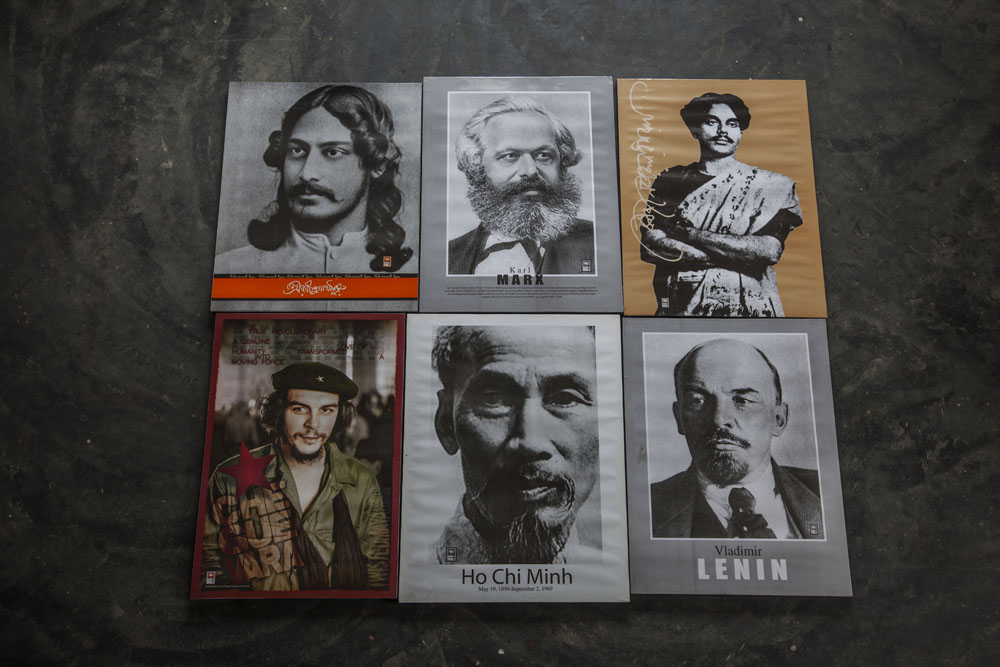
You had reminded us that a nation that fought oppression, could not rule by oppressing. That a people that fought for a language, could not triumph by suppressing another?s. That the martyrs who died, so we might be free, did not shed their blood, so we could become tyrants. That we who overcame the bullets and bayonets of soldiers, must never again be ruled through the barrel of a gun.
That Kalpana is what binds us. That is why Kalpana, you are not a pahari, or a woman or a chakma or a buddhist, but each one of us. For there can be no freedom that is built on the pain of the other. No friendship that relies on fear. No peace at the muzzle of a gun.
These Kalpana are your warriors. They have engaged in different ways, at different levels, sometimes with different beliefs. Some have stayed with you from the beginning. Others have drifted. They have not always shared political beliefs. But for you Kalpana, my unseen sister, they fight as one.
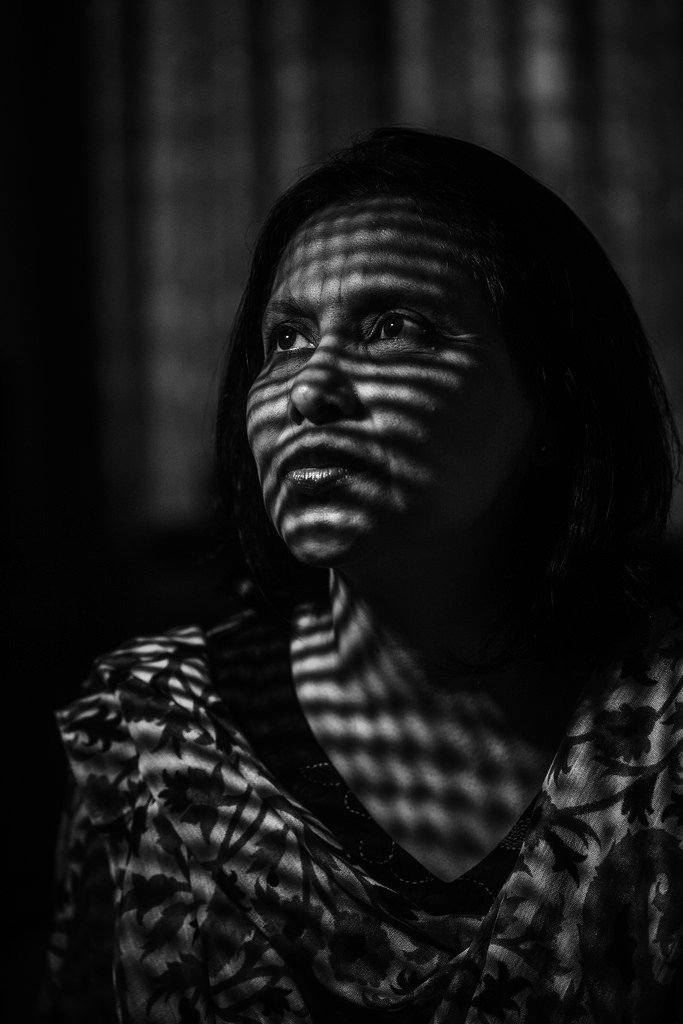
The Process
The process involved in creating these images are rooted to the everyday realities of the hill people, the paharis. Repeatedly, the interviewees talked of the bareness of Kalpana?s home. That there was no furniture, that Kalpana slept on the floor on a straw mat.
Sadia Marium making prints for my upcoming show on Kalpana Chakma #justiceforkalpana #eavig #CHT #military #bangladesh #rights #photography
A photo posted by Shahidul Alam (@shahidul001) on
Rather than print on conventional photographic media, we decided we would use material that was part of pahari daily lives. The straw mat became our canvas. The fire that had been used to raze pahari homes, also needed to be represented, so a laser beam was used to burn the straw, etching with flames, the images of rebellion.
It was the politics of this interaction that determined the physicality of the process. The laser beam consisted of a binary pulse. A binary present on our politics. In order to render the image, the image had to be converted in various ways. From RGB to Greyscale to Bitmap, from 16 bit to 8 bit to 1 bit. To keep detail in the skin tone despite the high contrast, the red channel needed to be enhanced. The Resolution and intensity and duration of the laser beam needed to be brought down to levels that resulted in the straw being selectively charred but not burnt to cinders.
A screen ruling that separated charred pixels while maintaining gradation had to be carefully selected. And then, working backwards, a lighting mechanism needed to be found that broke up the image into a discrete grid of light and dark tones, providing the contrast, the segmentation and the gradation, necessary to simulate the entire range of tones one expects in a fine print. This combination of lighting, digital rendering, printing technique and choice of medium, has led to the unique one off prints you see in this exhibition. A tribute to a unique woman that had walked among us.
Land and people. De-colonising the national imagination
By Rahnuma Ahmed
I see no reason not to be worried.
For we have, over the years, begun mimicking our erstwhile Pakistani rulers when it comes to explaining what went wrong in the Chittagong Hill Tracts.
The `tribals’ want to secede. They want to breakup the nation. The loyalty of the `tribals’ has always been suspect, in 1947, they didn’t want to join Pakistan, they had wanted to be part of India. The Shanti Bahini was aided and abetted by anti-Bangladesh forces outside. It is an Indian conspiracy to destabilise the country. Agreeing to the `tribal’ demand for autonomy diminishes the sovereignty of the Bangladesh state.
And what had our Pakistani rulers said, both before, and during, 1971?
The Bengalis want to secede. It’s an Indian conspiracy. Our mortal enemy India, wants to break up Pakistan. These Bengalis began agitating from the word go, first they wanted their own language, 1949, 1952, and then, from 60s onwards, they began demanding regional autonomy. Those in the Mukti Bahini are India’s paid agents. The Bengali Muslims are Hindus, anyway. They listen to Rabindra sangeet, the women wear saris, they put teep on their forehead. Agreeing to the Bengali demand for autonomy will be a threat to the sovereignty of the state of Pakistan.
There are other reasons to be worried, too.
There are some similarities in the responses of both sets of rulers: a militaristic response. In the case of ekattur (our liberation war), this was accompanied by Lieutenant General Tikka Khan’s declaration, `I want the land, not its people.’ Tikka was the architect of Operation Searchlight, launched on the night of 25th March 1971. We will always remember him as the Butcher of Bengal. A military commander, deluded into thinking that his efforts would save the nation.
The Awami League government had initiated and eventually signed a peace treaty with the PCJSS (Parbatya Chattagram Jana Samhati Samiti) in 1997. A few weeks after the signing of the Treaty, Khaleda Zia, as leader of the opposition, had declared: it will lead to the setting up of a parallel government. Others said, it was signed to please the Indian government. Writ petitions have been filed since, challenging the validity of the Peace Treaty. During a recent court hearing, the petitioners listed some of the reasons: the former chief whip of Parliament had no authority to sign the Treaty. He was not authorised by the President. A treaty can only be signed between two governments, the CHT people are not only not a government (!), they are “controlled by an Indian intelligence agency.” They are not indigenous to the land, “they” are settlers etc., etc. (New Age, 17 March 2010).
As things stand, some may think that the Awami League, by virtue of having initiated and signed the Peace Treaty, want peace in the hills, while the BNP (and its bed-fellow, the Jamaat), doesn’t want peace in the hills. There may be some truth in it.
But there’s more truth in what Bhumitra Chakma, a Jumma academic who teaches politics at the university of Hull, says: the recent attacks, on 19 and 20 February 2010, carried out by Bengali settlers in Baghaichari, backed by the armed forces prove yet again that unless the Bangladesh state addresses the structural roots of violence, the “cycle of violence” will continue (Economic and Political Weekly, 20 March 2010).
“At the core of the problem,” writes Chakma, is the Bangladesh government?s “politically-motivated Bengali settlement policy” aimed at changing the “demographic character of the CHT, which inevitably leads to clashes over land.”
The Bengali settlement policy, in my mind, was diabolical. By selecting “landless” Bengalis, it seemed that the military government was concerned about the futures of those who are poor, it helped hide the fact that their landlessness and abject poverty made them more amenable to military direction and control; that, as far as the military leadership was concerned, they were civilian subalterns/canon fodder. The settlement policy whipped up populist sentiments in the rest of Bangladesh: `If someone from the CHT can settle in Rangpur, if he can buy land there, why can’t someone from Rangpur go and live and work in the CHT? It’s one country, after all.’
The settlement policy seeped into public discourse, it helped re-define Bengali nationalism on territorial lines?as all nationalism is, is bound to be?but the new sense of territory/ nationalism was not of the resisting kind, of the kind that grows out of an urge for self-defense (like 1971), but one which encroached.
I am persuaded that this newly developing form of nationalism was distinct to the nationalism of the Mujib era (1972-1975). When Sheikh Mujib had exhorted the indigenous peoples “to forget their ethnic identities,” to merge with “Bengali nationalism,” what lay behind his words was a heady cultural arrogance, deeply entwined with feelings of racial superiority.
Bengali nationalism as encroaching, in a territorial sense, one which could be implemented through the planned deployment of coercive power, came later. After 1975.
I am inclined to think that it was at this historical moment that we i.e., the Bengalis as a nation?began to sound like our erstwhile rulers.
The latter, according to us, were colonisers.
Colonial orientation to land, and its people
One of the greatest liberal philosophers John Locke, analysed English colonialism in America in terms of his theory of man and society. I present Locke’s arguments below, based on a discussion by Bhikhu Parekh (The Decolonization of Imagination, 1995).
Locke had argued that since the American Indians roamed freely over the land and did not enclose it, since they used it as one would use a common land, but without any property in it, it was not `their’ land. That the land was free, empty, vacant, wild. It could be taken over without their consent. The Indians of course knew which land was theirs and which was their neighbours, but this was not acceptable to Locke who only recognised the European sense of enclosure.
However, there were native Indians living by the coastline, who did enclose their land. English settlers were covetous of these lands, they wanted these lands for themselves as it would help them avoid the hard labour of clearing the land. They argued that the native Indian practice of letting the soil regenerate its fertility, to let the compost rot for three years, meant that the natives did not make “rational use” of it. Locke agreed with them. Even enclosed land, he said, if it lay without being gathered, was to be “looked on as Waste, and might be the Possession of any other.”
Some Indians, however, not only enclosed the land, they also cultivated it. But they were still considered guilty of wasting the land because they produced not even one-hundredth of what the English could produce. The trouble with Indians was, according to Locke, they had “very few desires,” they were “easily contented.” Since the English could exploit the land better, “they had a much better claim to the land.” It was the duty and the right of the English to replace the natives, and, as long as the principle of equality was adhered to, no native should starve, nor should she or he be denied their share of the earth’s proceeds, English colonisation was infinitely more preferable. It increased the inconveniences of life. It lowered prices. It created employment.
The culture of indigenous peoples the world over, as has been noted by many political theorists, is inextricable from their culture. Take away their land, and you take away their culture.
Land in the Chittagong Hill Tracts belongs to the paharis. It is their land. A refusal to understand this means opening us to the allegation of whether our nationalism is their colonisation.
Bhumitra Chakma speaks of the “cycle of violence.” It is a cycle that is embedded in larger cycles. Nationalism. Colonialism.
My Bengali sense of freedom surely cannot be paid for by the blood of others?
A genuine leap of the national imagination
George Manuel, Secwepemc chief from the interior of British Columbia (Canada), indigenous activist and political visionary whose work on behalf of indigenous peoples spans the globe, writes:
When we come to a new fork in an old road we continue to follow the route with which we are familiar, even though wholly different, even better avenues might open up before us. The failure to heed (the) plea for a new approach to ..[Bengali-pahari] relations is a failure of imagination. The greatest barrier to recognition of aboriginal rights does not lie with the courts, the law, or even the present administration. Such recognition necessitates the re-evaluation of assumptions, both about [Bangladesh] and its history and about [Jumma] people and our culture-?Real recognition of our presence and humanity would require a genuine reconsideration of so many people?s role in [Bangladeshi] society that it would amount to a genuine leap of imagination. (Cited by Paulette Regan, Canada, 20 January 2005, by making the replacements in square brackets I have taken a liberty for which I hope I’ll be forgiven).
Are Bengalis capable of making a genuine leap of imagination? However hard, however difficult, we must. For the sake of the nation. For the sake of ekattur.
First published in New Age 26th March 2010
My Sister's Language
His eyes flitted forward and back, and having surveyed the scene for possible danger, it stopped. The head stooped, and that was how he stayed. Crouched on the floor of a bus full of Bangalis, the Pahari (hill person) amongst us, was living in occupied land. Keeping out of trouble was his best chance for survival.
It was only when the uniformed men with guns boarded the bus and prodded him that he raised his eyes. Scared, tired, hurt, angry eyes. But he knew enough to not express his anger. Meekly he obeyed the commands. His humiliation was also ours, but we did not complain. We were tourists in our own land, but the constitutional guarantees enshrined in our laws, while not fully respected anywhere, was particularly absent here. As well-connected Bangalis, we were far more safe than he was. But the rules of occupation are never generous, and they had guns. They left. We breathed more easily. He continued his journey with his head bowed. I took no photographs.
Walking through Rangamati as Bangali tourists was a disconcerting feeling. Many of the Bangalis here were also poor. Displaced from their homes in far away places, they had been dumped here with promises of a happy life. Left to fend for themselves, they joined the power chain well above the Paharis, but very low down all the same.
At the top of the chain was the military. Then the wealthy Bangalis, the ones who made the deals, then came the Paharis who had sided with the government. The Bangali settlers (the poor ones anyway), were quite a bit further down. The Paharis never dared to reach for the rungs of that ladder.
Rangamati was still a beautiful place. The homes buried beneath the lake when the Kaptai Dam was built, the tropical rain forests that had been destroyed, the hill people who were forced to leave their ancestral land, were things that never made it to our history books. The Hill Tracts featured in the picturesque postcards and tourism ministry books and the well rehearsed cultural programmes in the government Tribal Centre.
Occasional photographers from the lowlands came to discover the ?authentic tribal lifestyle?. A bare chest woman bathing by a waterfall, backlit women with children strapped on their backs, a wrinkled old woman smoking a pipe and other photographic trophies were potential award winners.
As anticipated, the tiktikis (lit: geckos, local term for government spies, generally members of ?Special Branch?) soon found us. They followed us everywhere. Asked stupid questions. Made notes. Questioned the people we had spoken to or visited. We consciously stayed away from friends. No point in getting them into trouble.
At a later visit, Drik?s printer Nasir and I had gone to Bandorban. Amongst the photographs I?d taken on that trip was this one of a mother weaving. Perhaps I was repeating what the trophy hunters had done, but the poster above the window, part of a UNICEF blindness prevention campaign, had words that seemed poignant. ?hai re kopal mondo, chokh thakite ondho?.? (oh what irony we find, we have eyes but are blind.)
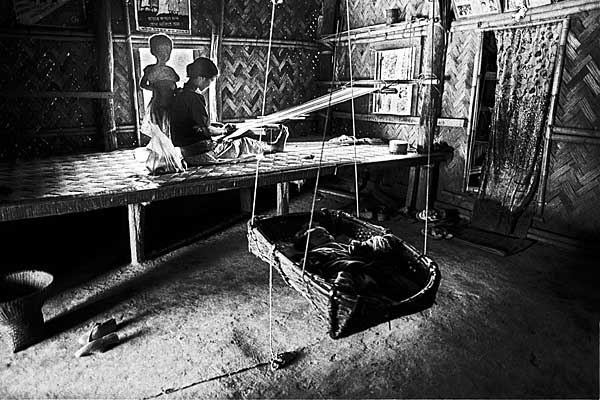
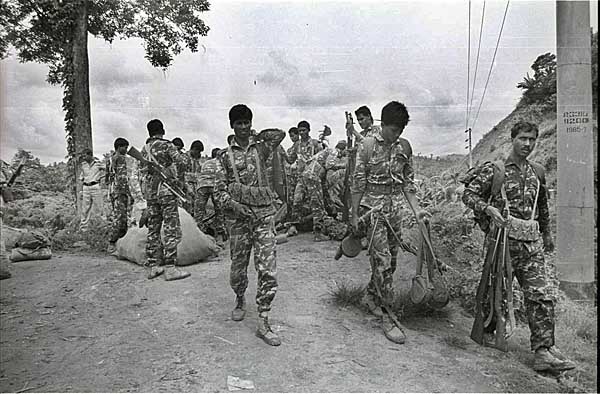
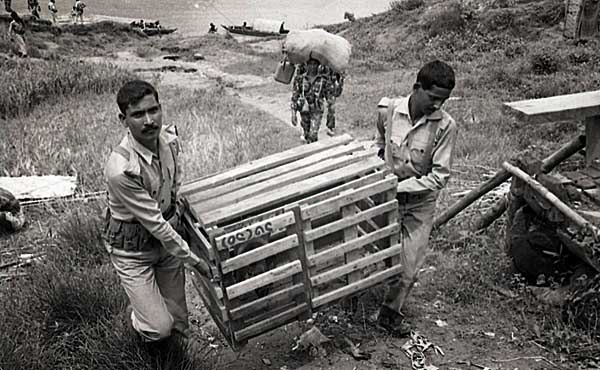
My eyes had shown me the military operations in the hill tracts. The deer being taken to the major?s home. The all Bangali military. The timber being taken to the military camp. While we did see Paharis, carrying loads, and doing odd jobs, most of the shop owners were Bangali settlers. It was Bangalis who had access to the government. They who obtained the local contracts. Menial labour was generally, all that Paharis could aspire to.
Kalpana Chakma?s abduction followed (12th June 1996). Friends got arrested. Some were released, but killed upon release. The violence continued, more murders, more rape, more displacement.
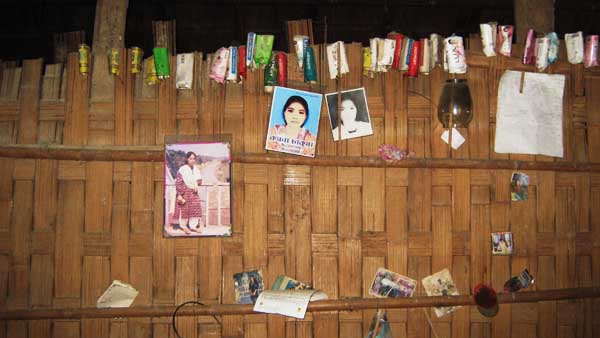
On 2nd December 1997 the newly elected Awami League (1996) signed the ?Peace Treaty? with Jana Samhati Samiti (JSS). This had led to divisions amongst the hill people. Many felt that the core concepts of:
1.??????????? Autonomy for the Chittagong Hill Tracts.
2.??????????? Withdrawal of the Bangali settlers.
3.??????????? Demilitarization of the Chittagong Hill Tracts.
were being compromised. Others were more pragmatic. Even those who questioned the signing of the treaty by JSS, despite their demands not having been met, recognise that peace in CHT is the ultimate goal, and that the land disputes that resulted from the government aided settlement of Bangalis was the core cause of the conflict.
The sole purpose of a nation?s military is to protect the sovereignty of all of its citizens, not to suppress them. The need to protect a nation?s borders cannot justify the forced eviction of people from their ancestral land. The disregard for even the commitments made, exposed the government?s lack of sincerity to the peace deal. Imperfect though it may be, for those clinging to the flimsiest of promises, the treaty still held hope.
The irony of the military and the settlers – in the second term of the Awami League – choosing the month of February, to remind the Paharis of how brutal they could be, was not lost on the survivors of the massacre. Salauddin, Jabbar, Barkat, Rafiq and Salam had died in 1952 to protect our mother tongue. In February 2010 many Pahari names joined the list of people who died for their mother tongue. But these different sounding names would never make it to that official list.
These were names that probably didn?t exist anyway. Without rights to land, citizenship and protection of the state, they were second class citizens at best, fugitives to be hunted, raped and killed at worst.
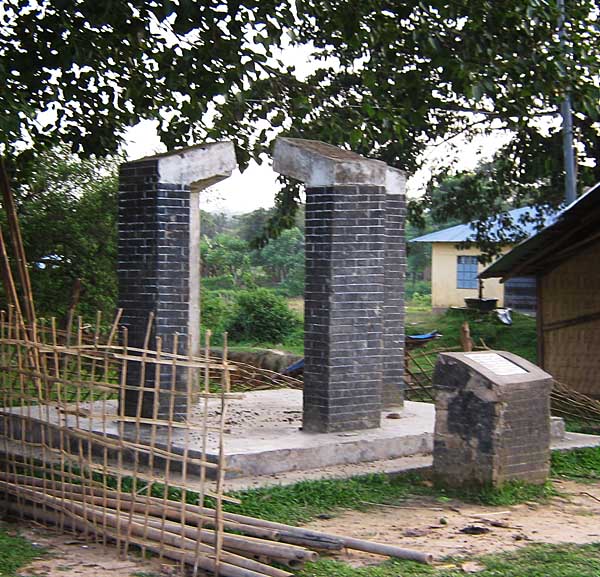
matri bhasha (mother tongue), has a very different meaning when your mother is Pahari. Kalpana,?I failed you as a brother, when they abducted you. I failed you as a friend, when they killed your brothers Mantosh, Samar, Shukesh and Rupan. I fail you now as a citizen, when my military and my government burn your villages, murder your families, take away your land. I fail you all as a human being, when you are prevented from laying flowers at the Shahid Minar in your village home. amar bhaier rokte rangano, ekushey february. ami ki bhulite pari. This month, red with your warm blood. I cannot, will not, must not, ever forget.
Shahidul Alam
Dhaka
28th February 2010
A story in Croatia with similar concerns:
Unidentified terrorists in the hills
Subscribe to ShahidulNews
rahnuma ahmed
Some external terrorists from outside Sajek have set these fires. There is no conflict between Bengalis and Paharis in this area. Those who set the fire don?t want the current communal harmony between Bengalis and Paharis to stay intact. Since they want to create a terrorist center in this area, they try to keep both sides agitated.
Major Kabir, second-in-command, Baghaihat zone (Fact Finding Team 1. Moshrefa Mishu et al, Report on 20th April Incident at Sajek Union.)
Bengali settlement in times of Emergency
BY NEARLY all accounts, Bengali settlement in the Chittagong Hill Tracts has accelerated. It has intensified. Why?
Discovering the truth is never an easy task. More so, in times of Emergency. But our rulers forget, not everyone submits. ?A happy slave is the biggest threat to freedom,? says a postcard on my wall. Fortunately, the peoples of this land, neither Bengalis nor adivasis, have submitted. Never fully. Or, for long.
Five victims of Sajek ? Pahari villagers ? have come forward. They spoke out at a press conference in Dhaka, on April 27, 2008. Two separate fact-finding committees, consisting of writers, teachers, lawyers, student leaders and activists, human rights activists, left leaders, journalists, women?s group activists, visited the affected villages in Sajek, Rangamati. They spoke to Paharis and Bengalis. To settlers and civilians, to army personnel. They spoke to Paharis who had sought refuge in temples and forests after the arson attacks of April 20. Some still sleeping under open skies. They spoke to settler Bengalis too. To those who had taken refuge in the local market. To another settler, who had sought and found refuge in the nearby army camp itself. Those in the market were also being looked after by the army.

Bengali settler houses, Dui Tila, Sajek union. ?Udisa Islam, 27 April 2008.
Binoy Chakma, a Pahari victim, had said at the press conference, nearly ninety per cent of the villagers of Purbo Para, Gongaram Mukh, Retkaba, Baibacchora, the four Pahari villages that were burnt down, originally belonged to Longodu, Borkol, and Dighinala. But we were forced to leave our homes, said Binoy, because of army and settler attacks. Life in Baghaicchori, under Sajek union, was not easy. Army presence was continuous. It was stifling. But we managed. We managed to lead peaceful lives, to eke out modest livings. Things changed, however, with the declaration of Emergency, said Binoy. Warrant Officer Haroon told us, army posts will be built here. But later, small huts were built instead, in our land and garden. The settlers built them, the army helped them. We had set aside land for building a Buddhist temple, they took that away too. We protested, but they threatened us. Indra Chakma?s pineapple garden in Retkaba was destroyed. Ali, a settler, forcibly built a house on Indra?s land. Indra resisted, Ali and the soldiers dragged him to the army camp. If you protest again, they said, we?ll slaughter you like a sacrificial cow. There were other injustices, too. Rat infestation had left us with little food, the UNDP gave rice for 1,500 families. It was the UP Chairman L Thangar?s duty to distribute 20 kilograms for each family. But he gave only 8-10 kilograms to each Pahari family. When we asked him, he said, he had army instructions.
One of the fact-finding committee?s reports corroborates Binoy?s account, ??since 11 January 2007, the process of Bengali settlers grabbing Pahari land has accelerated.? It also says land grabbing and Pahari eviction is taking place under army supervision. A weekly review of the Asian Centre for Human Rights (April 23, 2008) reports similar trends, ?Since the imposition of the State of Emergency, the implantation of illegal plain settlers has intensified with the direct involvement of Bangladesh army.?
Between 1979 and 1983, Bangladesh?s military rulers sponsored migration of Bengali settlers into the Chittagong Hill Tracts. An estimated 500,000 plains settlers were provided land grants, cash and rations. As is clear from the Chittagong Hill Tracts Commission report, Life is not ours (1991), the programme of turning Paharis into a minority was not made public then. Government representatives had repeatedly denied the existence of such a plan.
What does one hear now? Bengali settlement in the CHT is a thing of the past. The 1980s, yes, that was the settlement era. It was a mistake. The military rulers failed to realise it was a political problem, it should not be dealt with by force. Things are very different now. Now you may find some Bengalis going to CHT, they are following their family members. That is not settlement. How can one stop that? It sounds nice, the only problem is that it isn?t true. Settlement is still active. It seems to be at a final stage. Ina Hume, a daughter of the hills, and a careful observer of military repression wrote in 2005, a new road has been built from Baghaihat to Sajek. It borders the Mizoram hills of northeast India. She adds, there have been reports that the Bangladesh Army is involved in settling a further 10,000 Bengali families in the Kassalong Reserve Forest in Sajek. The writers of Life is not ours had noted, Pakistan, and later, the Bangladesh government had been uneasy about the borders with India and Burma being inhabited by a majority of the hill peoples. The Sajek incident, it seems, was destined to occur.
Need I say that the proposed settlement of Bengali families in the Kassalong Reserve Forest is in direct negation of the 1997 Peace Accord? Or, that the construction of the Baghaihat-Sajek road by the Bangladesh Army Engineer Construction Battalion, in the Kassalong Reserve Forest, clearly violates the Forest Act of 1927, and the Bangladesh Forest (Amendment) Act, 2000?
Four stakes vs Pahari homes
Most media reports in the Bangladesh press have stressed that losses occurred on both sides. Most reports mentioned that a larger number of Bengali homes were razed to the ground.
The fact-finding committee reports have been invaluable in providing a truer account of what happened. The report of the fact-finding committee led by Sara Hossain contains vivid descriptions of what Paharis lost as a result of the attacks. A middle-aged Chakma villager of Balurghat Para had told the committee members, ?Our rice, clothes, pots-pans-plates have all been burnt. School books, birth registration certificates, SSC certificates, they?re all totally burnt.? Several eyewitnesses and victims had said that their valuables were looted first, the houses set on fire later. A Daney Bhaibachora villager who had been interviewed had said, ?The people who were setting things alight, they first took out from our homes, the TVs, beds, wardrobes, whatever they found, they looted, and at the end they torched the houses. Those who set the houses alight. They took everything.? A Chakma woman had added, ?I?ve heard that a TV was found in the Bangali Para. The Army has said that they will return the TV.?

Bengali settler houses, Dui Tila, Sajek union. ?Udisa Islam, 27 April 2008.
The other committee report, the one led by Moshrefa Mishu, is also invaluable. It fleshes out what the Bengalis settlers lost. According to the writers, Bengali settler houses are temporary shelters. They consist of four stakes (khuti) pegged to the ground. There are hundreds of such homes in the Dui Tila area. They write, we spoke to Bengali inhabitants, who told us that they live here for short periods only. The report says, land grants to Bengali families are parcelled into smaller pieces meant for habitation, close to army camps, and larger pieces, located in far-away places. The report states, ?…most Bengalis have two houses… Dighinala and Lichu Bagan are 12 kilometres apart…We interviewed settlers who told us that they had received 4 acres and 1/70th land in Lichubagan, and the remaining 1/30th land on Betcchari.? The writers go on, it was the same in Dui Tila and Chongracchori. Settlers told us, they had 1/30th of an acre here, the rest, 4 acres and 1/70th land in distant mountainous areas.
Communal harmony: a myth in the making?
After the Sajek incident, both high military officials in Dhaka, and those lower in the rung, in the Hill Tracts, like the Major quoted above, have spoken of the communal harmony that exists in the Hill Tracts, that incidents like the Sajek arson attack threaten. These will not be tolerated, we have been told. A group of ?external terrorists,? described by some as ?unidentified terrorists,? is out to destroy peace and development efforts in the Chittagong Hill Tracts. The army has affirmed that such incidents will not be tolerated, that peace and communal harmony must be maintained at all costs.
Such affirmations ignore history. It makes nothing of tales of killingsperpetrated by Bengali settlers and security forces. To mention some: Logang cluster village massacre, Khagracchori 10 April 1992. Naniarchar Bazar massacre, Rangamati, 17 November 1993. Malya massacre, Langadu upazilla, 1992. It ignores instances of communal riots such as the Bhuacchari incident, April-May 2003.
Other Sajeks will occur, I guess, if we do not face up to the truth. Even in times of emergency.
First published in New Age on 12th May 2008

